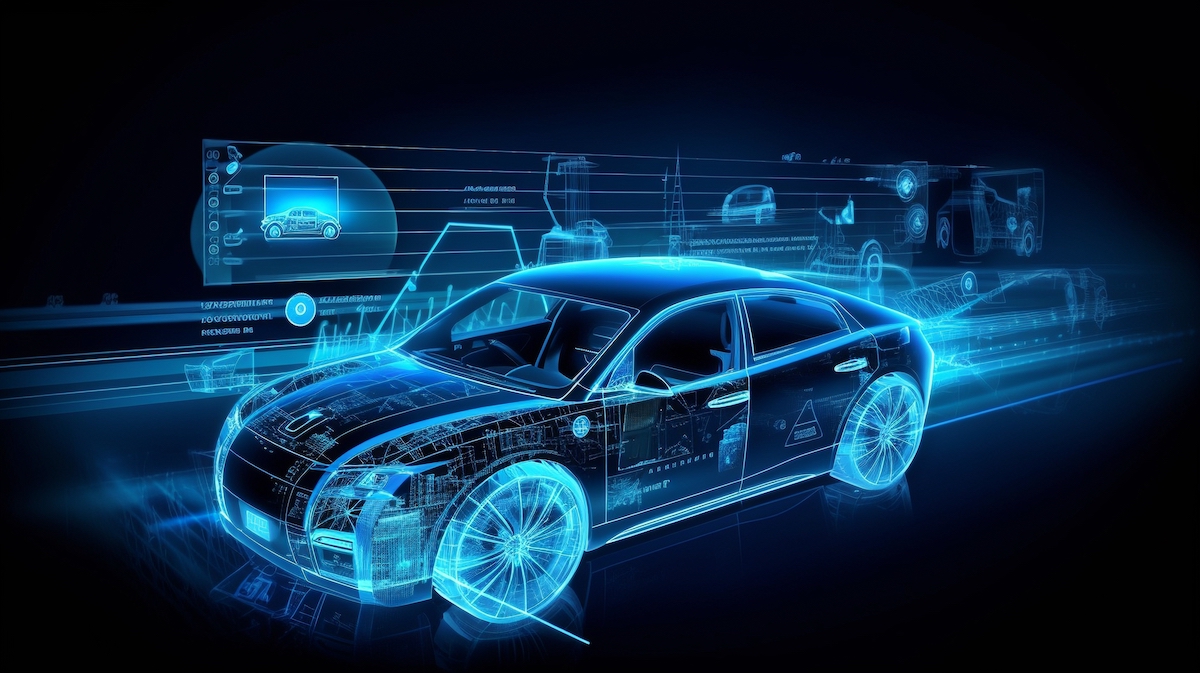How automotive software promotes safe driving
With road accidents consistently ranking as one of the leading causes of injury and death across the globe, automotive safety remains a burning issue. These incidents not only result in personal tragedies but also place a heavy burden on healthcare systems and insurance providers.
However, technological advances hold the potential to significantly reduce the number of accidents and casualties. This article provides insight into how automotive software solutions contribute to road safety.
How automotive safety systems work
Automotive safety systems are typically divided into active and passive, depending on their purpose and time of application. Active safety systems include:
• Electronic stability control
• Adaptive cruise control
• Anti-lock braking
• Lane departure warning
• Blind-spot monitoring
• Collision avoidance
They are designed to assist drivers in handling dangerous circumstances to prevent crashes or collisions. In contrast, passive safety systems, such as airbags or safety belts, come into play after an accident to mitigate its consequences.
Automotive safety systems encompass a variety of hardware and software technologies. For example, they can utilize sensor fusion and calibration techniques, merging data from various sensors, including cameras, accelerometers, strain gauges, RADAR, and LIDAR. Computer vision algorithms process visual data from cameras and imaging sensors to identify objects in the vehicle’s surroundings. Additionally, machine learning algorithms help analyze data and detect potentially dangerous situations. AI mechanisms can also streamline the decision-making process, provide alerts, and trigger appropriate actions such as emergency braking.
Four ways to boost driving safety with automotive software
1. Mitigating risky driver’s behavior
According to the Euro New Car Assessment Program 2025 roadmap report, over 90% of road accidents are caused by “human mistakes.” Activities such as texting, talking on the phone, eating, or adjusting the radio can divert the driver’s attention from the road. Alcohol, drugs, as well as fatigue or health problems can impair a driver’s reaction and coordination. Another risky behavior is speeding, especially in adverse road or weather conditions.
Driver monitoring, speed monitoring, and lane departure warning systems can address these risks. They rely on computer vision and ML/AI algorithms to recognize and analyze the driver’s eyelid movements, head position, facial expressions, steering pattern, and the vehicle’s position in the lane.
If a concerning behavior is detected, the monitoring software generates alerts to draw the driver’s attention to the problem. Some advanced systems can trigger actions like reducing the vehicle’s speed or even steering to keep the vehicle in the lane.
2. Enhancing the awareness of the road situation
Certain road areas pose higher accident risks due to sharp curves, steep hills, dimly lit roads, faded signs, and animal crossings. Adverse weather conditions are another common reason for road accidents. According to the data provided by the National Highway Traffic Safety Administration, weather events contribute to approximately 21% of all crashes. Besides, heavy traffic increases the likelihood of rear-end collisions and aggressive driving behavior.
Navigation software provides a solution. It collects data from GPS satellite imagery and crowd-sourced data, warning drivers about congestion, accidents, road construction, closures, and bad weather conditions. This software offers lane guidance for complex intersections and suggests alternative routes. Plus, users can personalize preferences based on their driving style and experience. As a result, they will be able to avoid highways or steer clear of certain areas known for high traffic or safety issues.
Other promising, yet not common, technologies that can help drivers better assess and respond to complex road situations are Vehicle-to-Vehicle (V2V) andVehicle-to-Infrastructure communication. Vehicles equipped with V2V systems continuously exchange data about their speed, position, route, and other relevant parameters. So, if one car detects that another is about to run a red light or spots an obstacle ahead, it canwarn the nearby V2V-enabled vehicles surrounding it.
A V2I system derives information from the roadside infrastructure, including traffic lights, signs, and road sensors. It allows vehicles to adapt to traffic signals. For example, if the system sends a notification that a traffic light will turn green soon or road construction is not far away, a driver can adjust the speed to prevent hard braking.
3. Improving car control
When a driver can’t avoid a dangerous situation, the ability to control the car becomes a matter of survival. This is where wheel speed and yaw rate sensors, gyroscopes, and other vehicle sensors come into play, helping predict the car’s behavior. In addition, computer vision algorithms can detect vehicles, pedestrians, cyclists, road signs, traffic lights, and other objects in the car’s surroundings.
Based on real-time data analysis, stability control, anti-lock braking, traction control, adaptive cruise control, and similar safety systems trigger the necessary actions. For example, traction control systems compare wheel speed and detect wheel spin during acceleration. If this spin is excessive, it signals to reduce engine power or apply the brakes to the spinning wheel to restore traction.
4. Addressing the consequences of an accident
If a car accident has already happened, prompt and adequate actions to address the consequences are critical. Post-crash and emergency response systems use telematics software to gather and analyze the data from GPS and various sensors, including accelerometers, impact sensors, and seat occupancy sensors. This data is crucial for comprehending the circumstances of the crash.
Once an accident is detected, post-crash systems send notifications to emergency services. These systems often incorporate user interfaces within the vehicle to enable the driver or the passengers to request assistance. If the vehicle occupants are unable to communicate, emergency services can use the information contained in the notification. It usually includes such details as the severity of the collision, the number of potential casualties, the vehicle’s precise location and identification, and other pertinent data.
Final thoughts
Automotive safety systems are instrumental in preventing road accidents or mitigating their severity. It’s no surprise that these systems are gaining popularity, driven by the increasing consumer demand for safer and more convenient driving experiences.
Recognizing the value of these innovative safety measures, organizations like the National Highway Traffic Safety Administration and the Insurance Institute for Highway Safety actively encourage their implementation across various vehicles.
Due to rapid technological progress, automotive safety systems will become more accurate, efficient, and also more affordable due to increased competition among automakers. This means that a broader range of vehicles, from compact cars to large trucks will be equipped with advanced safety features, which will make the roads safer for everybody.
About the author
This article was written by Natalya Butkevich, a Technology Research Analyst at Itransition, a software development company headquartered in Denver.



